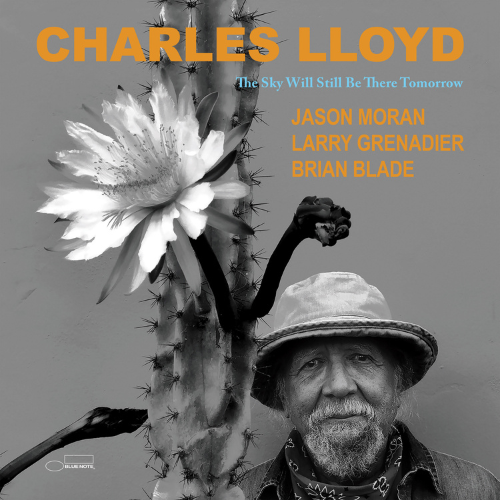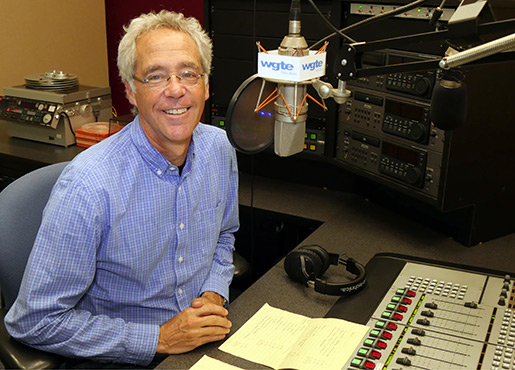
Charles Lloyd: The Sky Will Still Be There Tomorrow
By Fritz Byers
Charles Llloyd Photo Album Credit: Photo and Design by Dorothy Darr

Jazz flourished in the 1950s with a sprawling diversity of styles that at once reflected and rebelled against the air-conditioned-nightmare qualities of that decade. Bebop, cool jazz, hard bop, third-stream hybrids, Tristano-Konitz complexities, and more. The music and the virtuosos who made it were at once exemplars of the culture and counter-culture renegades. In the jazz-history class I’m teaching this semester, we’ve been (appropriately enough) improvising a few riffs on the non-linear but sociologically fascinating relationships between jazz innovation and the society and cultural milieus from which they sprang (and spring). I’ve learned a ton from the class. The subject won’t ever fall into a tidy general theory, but it has me thinking.
Late in that fascinating decade, the music (and social) critic Ralph J. Gleason and the revered jazz disc-jockey Jimmy Lyons (subject of Gerry Mulligan’s irresistible cool-jazz composition,“Line for Lyons”) invented the Monterey Jazz Festival. The first Festival was held in 1958 on the Monterey County Fairgrounds, a charming spot that has remained the venue for all the years since. Last I knew, there were nine stages, hundreds of musicians, and tens of thousands of grateful fans.
As a reflection of the cultural currency of the first Festival, the master of ceremonies was the comedian, social satirist, and provocateur Mort Sahl, and the line-up reads like the pantheon of a Jazz Hall of Fame – Louis Armstrong, Benny Carter, Dizzy Gillespie, Billie Holiday, Sonny Rollins, the Modern Jazz Quartet, and so on. From the very start, for the most prominent jazz stars the Festival was the place to play. And if you were on the cusp of a breakthrough and received an invitation, it was the chance of a lifetime.
In 1966, the saxophonist and flutist Charles Lloyd got the call. He’d put out a couple of albums that had produced some buzz, most prominently the March 1966 recording Dream Weaver with the pianist Keith Jarrett, the bassist Cecil McBee, and the drummer Jack DeJohnette – at the time each of them was a no-name who would rapidly would ascend to the highest echelons of the music. (Here’s a great bit of trivia: Robbie Robertson, the guitarist and songwriter for The Band, plays on Charles’s 1965 release, Of Course, Of Course.)
The quartet that made Dream Weaver played at the Monterey Jazz Festival on September 18, 1966. The performance was recorded and, augmented by a couple of studio tracks, released the following year as Forest Flower. In no time, the album was everywhere on FM radio, with special attention to the title tracks, a two-part suite subtitled “Sunrise” and “Sunset.” The album sold more than a million copies, rarefied air for a jazz release.
Less observed at the time was the fact that, beneath the fashionable cross-over qualities of the tunes, taken as a whole the work reflects a profound and highly suggestive synthesis of the full evolution of jazz styles from the subtle harmonic shadings of Ellingtonia through the innovations of Charlie Parker and his acolytes and the sophistications of the Modern Jazz Quartet, to the turbulent new-thing challenges of Ornette Coleman (with whom Charles developed an intricate relationship of reciprocal admiration). For those who had been paying close attention, this was not a surprise – Charles grew up with the trumpeter Booker Little and studied with the pianist Phineas Newborn, and Chico Hamilton had chosen Charles to replace the great multi-reed artist Eric Dolphy in Chico’s pathbreaking band.
Forest Flower was the expression of an eclectic musical conception that had been incubating for years. And since then, Charles has never ceased to grow, expand the sweep of his vision, and produce music of exquisite beauty. A 2014 chronicle of the arc of Charles’s life, released on ECM, is aptly titled Arrows Into Infinity.
Since 1996 and the release of his spellbinding masterwork Canto, Charles has released more or less an album a year, without once repeating himself or losing sight of the next horizon. It’s almost churlish to pick favorites among a canon of this quality, but I’ll mention Hyperion with Higgins, Which Way is East, Jumping the Creek, Vanished Gardens, 8:Kindred Spirits, and the 2022 live trilogy Trio as being especially worth your attention.
This week on Jazz Spectrum you’ll hear several tracks from Charles’s new release, The Sky Will Still Be There Tomorrow. He began conceiving the work during the imposed seclusion of COVID and amid the social upheaval and intense violence of the summer of 2020, and he envisioned a new quartet to play the new music. For the recording, his first in the studio since 2017, he’s assembled a dream trio of the pianist Jason Moran, the bassist Larry Grenadier, and the drummer Brian Blade.
The double album comprises six new Lloyd compositions and reimaginings of another nine. This week’s show opens with “Monk’s Dance.” Jason Moran sets the mood with a piano line that channels Thelonious Monk but is also wholly new, and then Charles enters with a bravura solo that I hear as a summary of his sixty years on the forefront of the music, but one utterly devoid of nostalgia or resignation. Following that in the first set is “Booker’s Garden,” a tribute to his lost friend Booker Little, of whose death at 23 Charles said “he left town as an enlightened Soul.”
Later sets offer two more tastes of the new record: “Cape to Cairo” (Set 3) and the new composition, “Defiant, Tender Warrior” (Set 8). The latter is a particularly revealing showcase for the new quartet and its evolving dynamic. All the notes are worth your focus, but you’ll enjoy the remarkable interplay between Larry on bass and Brian on drums in service of Charles’s lustrous composition.
Sixty years ago at Monterey, Charles announced himself with a new quartet that captured everyone’s attention. And he’s done it again with The Sky Will Still Be There Tomorrow.
- Home
- Schedules
- TV
- TV
- Local TV Programs
- Business | Life 360 with Kristi K.
- Toledo Stories
- To The Point with Doni Miller
- Listening with Keith Burris
- Ideas & Insights
- WGTE Presents
- BL360: Northwest Ohio Innovation Consortium
- Magic of the Old West End
- Freedom Means Never Surrender
- I&I: The Random Factor
- FF: National Cherry Festival
- TTP: Moms Demand Action For Gun Sense in America
- Watch Live
- Radio
- Education
- Community
- Support
- About
- Donate



